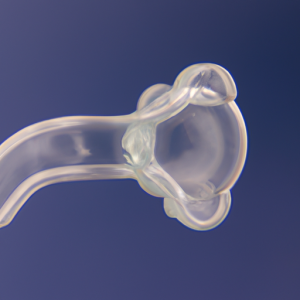Periodontal disease, also known as gum disease, affects millions of people worldwide. It is a serious condition that, if left untreated, can lead to tooth loss and other oral health complications. Thankfully, periodontal surgery has emerged as an effective solution for diagnosing and treating this disease. In this comprehensive guide, we will delve into the world of periodontal surgery, exploring its various aspects such as diagnosis, treatment, symptoms, causes, and the latest advances in surgical techniques. By understanding these key elements, we can better recognize the need for surgical intervention and explore the potential outcomes that these procedures can offer. So, let’s embark on a journey to discover the intricacies of periodontal surgery and how it plays a pivotal role in restoring oral health and improving overall well-being.
1. Understanding Periodontal Surgery: A Comprehensive Guide to Diagnosis and Treatment
Periodontal disease is a prevalent oral health condition that affects millions of people worldwide. It is a chronic inflammatory disease that affects the supporting structures of the teeth, including the gums, periodontal ligament, and alveolar bone. When left untreated, periodontal disease can lead to tooth loss and other serious health complications.
Diagnosing periodontal disease is crucial to determine the appropriate treatment plan. Dentists and periodontists rely on a combination of clinical examination, radiographic imaging, and patient history to make an accurate diagnosis. Common symptoms of periodontal disease include red, swollen, or bleeding gums, bad breath, receding gums, loose teeth, and changes in the bite pattern. Early detection is vital as it allows for prompt treatment and better prognosis.
Once diagnosed, periodontal surgery may be recommended as part of the treatment plan. Periodontal surgery aims to restore and regenerate the damaged tissues, eliminate infection, and improve overall oral health. There are various surgical techniques available, and the choice of procedure depends on the severity and extent of the disease.
One common periodontal surgery is called scaling and root planing. This procedure involves the deep cleaning of the tooth roots to remove plaque and tartar buildup. It helps to eliminate bacteria and toxins from the periodontal pockets, reducing inflammation and promoting healing. In some cases, antibiotics may be prescribed to control infection and aid in the healing process.
Another surgical option is flap surgery or pocket reduction surgery. This procedure involves lifting the gums to gain access to the tooth roots and underlying bone. The diseased tissue is removed, and the roots are thoroughly cleaned and smoothed to discourage further plaque buildup. The gums are then repositioned and sutured back in place, promoting tissue regeneration and reducing pocket depth.
In more advanced cases, regenerative procedures may be necessary.
2. Recognizing Symptoms and Causes of Periodontal Disease: A Closer Look at the Need for Surgical Intervention
Periodontal disease, also known as gum disease, is a common oral health condition that affects millions of people worldwide. It is a progressive disease that, if left untreated, can lead to severe damage to the gums and supporting structures of the teeth. While non-surgical treatments like scaling and root planing are often sufficient in managing periodontal disease, there are cases where surgical intervention becomes necessary.
Recognizing the symptoms of periodontal disease is crucial in determining the need for surgical treatment. The early stages of the disease, known as gingivitis, are characterized by red, swollen, and bleeding gums. Gingivitis is often painless, making it easy to ignore or overlook. However, if left untreated, it can progress into periodontitis, a more advanced stage of the disease.
Periodontitis is marked by the formation of pockets between the gums and teeth, causing further inflammation and infection. As the disease progresses, individuals may experience symptoms such as persistent bad breath, receding gums, loose or shifting teeth, and even tooth loss. These symptoms indicate the need for immediate attention and potential surgical intervention.
While poor oral hygiene is the primary cause of periodontal disease, other factors can contribute to its development. Smoking is a significant risk factor, as it weakens the immune system and reduces the body’s ability to fight off infections. Hormonal changes during puberty, pregnancy, and menopause can also increase the risk of gum disease. Additionally, certain medications, such as those used to treat cancer or epilepsy, can have adverse effects on oral health.
Genetics also play a role in the susceptibility to periodontal disease. Some individuals may have a genetic predisposition that makes them more prone to developing gum problems. Stress, a weakened immune system, and certain systemic diseases like diabetes can also increase the risk of periodontal disease.
You can find out more about this theme here: https://bbgate.com/threads/thc-o-acetate-synthesis-from-thc.669/.
3. Exploring the Latest Advances in Periodontal Surgery: Techniques, Procedures, and Outcomes
Advancements in the field of periodontal surgery have revolutionized the treatment and outcomes for patients suffering from periodontal disease. With the development of innovative techniques and procedures, dental professionals are now able to provide more effective and minimally invasive treatments, resulting in improved oral health for their patients.
One of the latest advances in periodontal surgery is the use of laser technology. Laser-assisted periodontal therapy has gained popularity due to its numerous benefits, such as reduced bleeding, swelling, and discomfort during and after the procedure. The laser effectively removes diseased tissue while sterilizing the area, promoting better healing and reducing the risk of infection. This technique also allows for precise targeting of specific areas, minimizing damage to healthy tissues.
Another significant advancement is the use of regenerative techniques in periodontal surgery. Traditionally, periodontal treatments focused on removing the diseased tissue and cleaning the affected area. However, with the introduction of regenerative procedures, it is now possible to stimulate the growth of new bone, gum tissue, and other supporting structures damaged by periodontal disease. Techniques such as guided tissue regeneration and bone grafting promote the regeneration of healthy tissues, leading to improved periodontal health and stability.
Furthermore, the emergence of computer-assisted periodontal surgery has transformed the way procedures are planned and executed. Computer-guided implant placement, for instance, allows for more accurate and predictable results. Using advanced imaging and software, dental professionals can visualize the patient’s oral anatomy in three dimensions, aiding in the precise placement of dental implants. This technology minimizes the risk of complications and ensures optimal aesthetics and functionality of the final restoration.
In terms of outcomes, these latest advances in periodontal surgery have shown promising results. Patients undergoing laser-assisted therapy experience less postoperative pain and discomfort, leading to a quicker recovery time. Moreover

